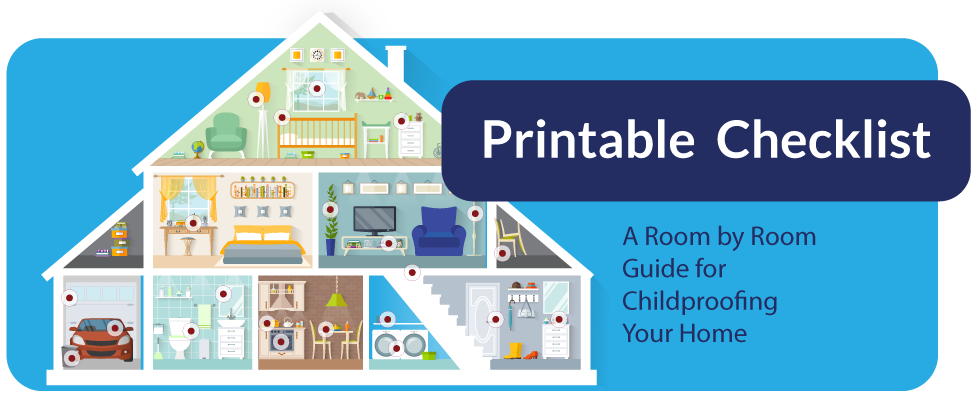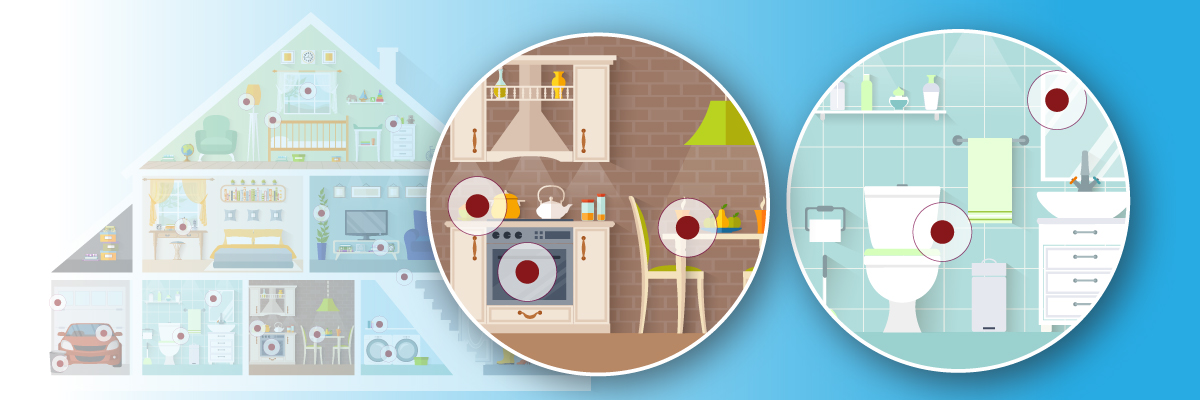Article at-a-glance
- While the majority of childhood injuries happy at home, they can be prevented with a few simple steps.
- As your child hits new milestones, you will have to continually childproof your home, room by room.
- Start by childproofing the kitchen and bathroom(s) in your home.
Home may be where the heart is, but it’s also where the majority of childhood injuries happen. Fortunately, most injuries can be prevented with a few simple (but crucial) steps.
 Remember that childproofing is a continual process. It’s easy to forget that with each age and developmental step, children can get into more mischief. They can reach higher, move faster, and better manipulate handles with every month that passes. Make new inspections of your home regularly—and especially when your child masters a new milestone like walking.
Remember that childproofing is a continual process. It’s easy to forget that with each age and developmental step, children can get into more mischief. They can reach higher, move faster, and better manipulate handles with every month that passes. Make new inspections of your home regularly—and especially when your child masters a new milestone like walking.
This is the beginning of a series of articles to help you create a safe home environment—room by room.
In the Kitchen
- Safety latches should be installed on cabinets and drawers, especially those that contain cleaning supplies, knives and other sharp objects, glassware, and alcohol.
- Pots on the stove should be turned with handles inward and out of a child’s reach. Make a habit of using the back burners when possible.
- Keep counter appliances unplugged and out of reach when not in use.
- Secure tablecloths (or use placemats) so young children cannot pull the contents on top of them.
- It’s safer to place your baby into a strapped highchair or playpen instead of carrying your infant while cooking.
- Refrigerator magnets should be kept above your child’s reach to avoid choking hazards as well as potential scrapes with sharp edges.
- Keep the fire extinguisher handy, but in a secure location.
- It’s best to feed pets away from young children—for safety and hygiene.
- Gate off the kitchen, if possible, when adults are not around to supervise.
In the Bathroom
The bathroom needs a lot of child supervision as it’s one small place that has so many lures to children.
- Always keep tubs drained. A young child can drown in just a few inches water.
- Put a safety lock onto the toilet lid – it will prevent a small child from toppling inside and could spare your phone from an early, watery death.
- The hot water heater temperature should not exceed 120-degrees F. Always test the water with your forearm before putting your child in the tub. Look into purchasing an anti-scald device that slows water to a trickle if the temperature gets too hot.
- Use non-skid decals or a rubber mat inside the tub to prevent slips and falls.
- Keep medicines, hair products, soaps, and razors inside a high, locked cabinet. Medications are a leading cause of poisoning deaths.
- Small appliances, like hair dryers, curling irons, and electric razors should be unplugged and out of reach.
- Use plastic cups in the bathroom. Broken glass can cut tiny feet and toes!
- Latch the bathroom door at adult level to prevent children from entering alone—especially if you need to soak something in the bathtub.
For more tips on childproofing other rooms in your home, read these other posts in our series:
Childproofing Your Bedrooms
Childproofing Your Living Space and Laundry Room
Childproofing the Garage, Storage Areas, and Yard
Save
Save
Share this article:

 Remember that childproofing is a continual process. It’s easy to forget that with each age and developmental step, children can get into more mischief. They can reach higher, move faster, and better manipulate handles with every month that passes. Make new inspections of your home regularly—and especially when your child masters a new milestone like walking.
Remember that childproofing is a continual process. It’s easy to forget that with each age and developmental step, children can get into more mischief. They can reach higher, move faster, and better manipulate handles with every month that passes. Make new inspections of your home regularly—and especially when your child masters a new milestone like walking.